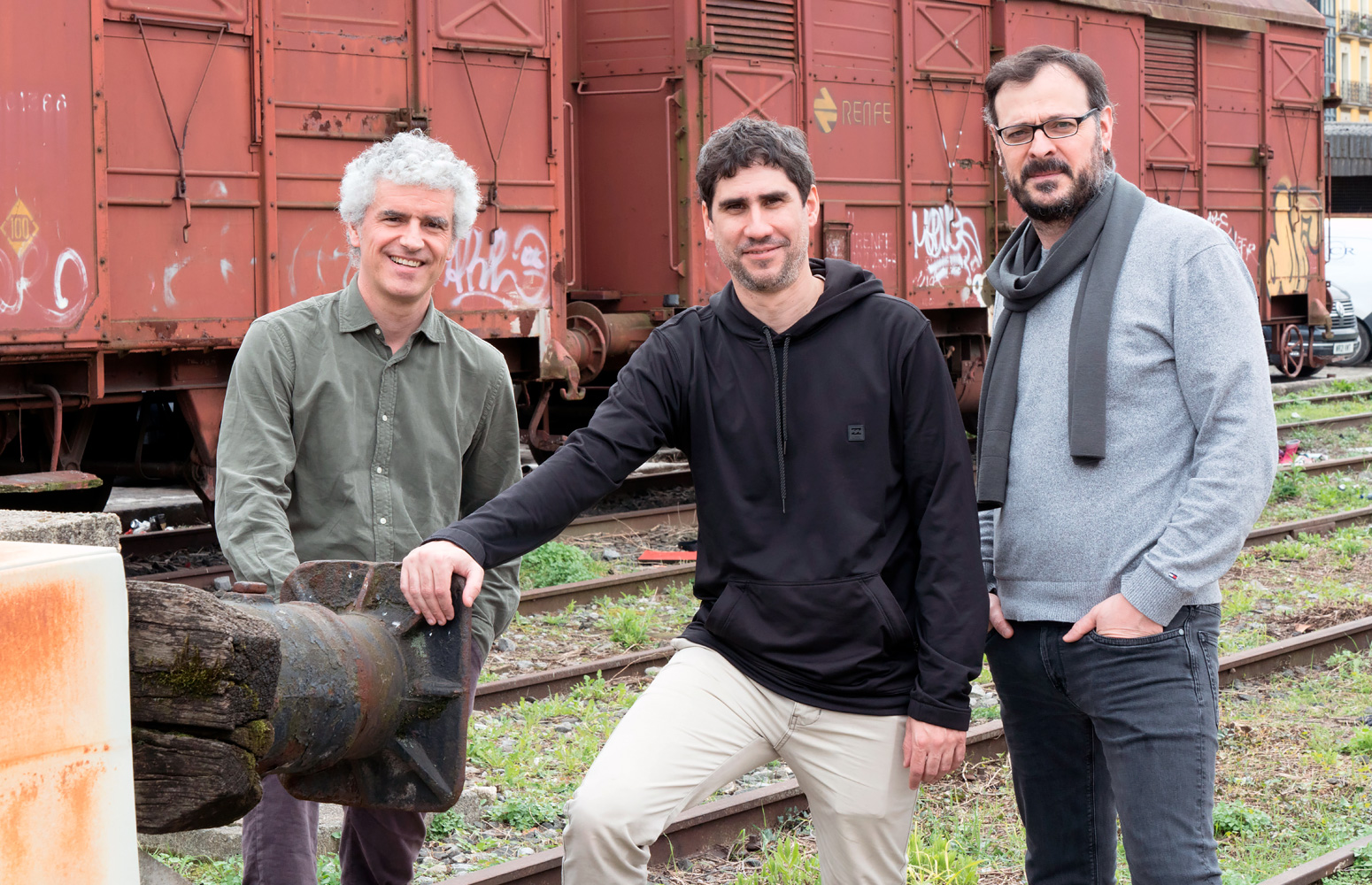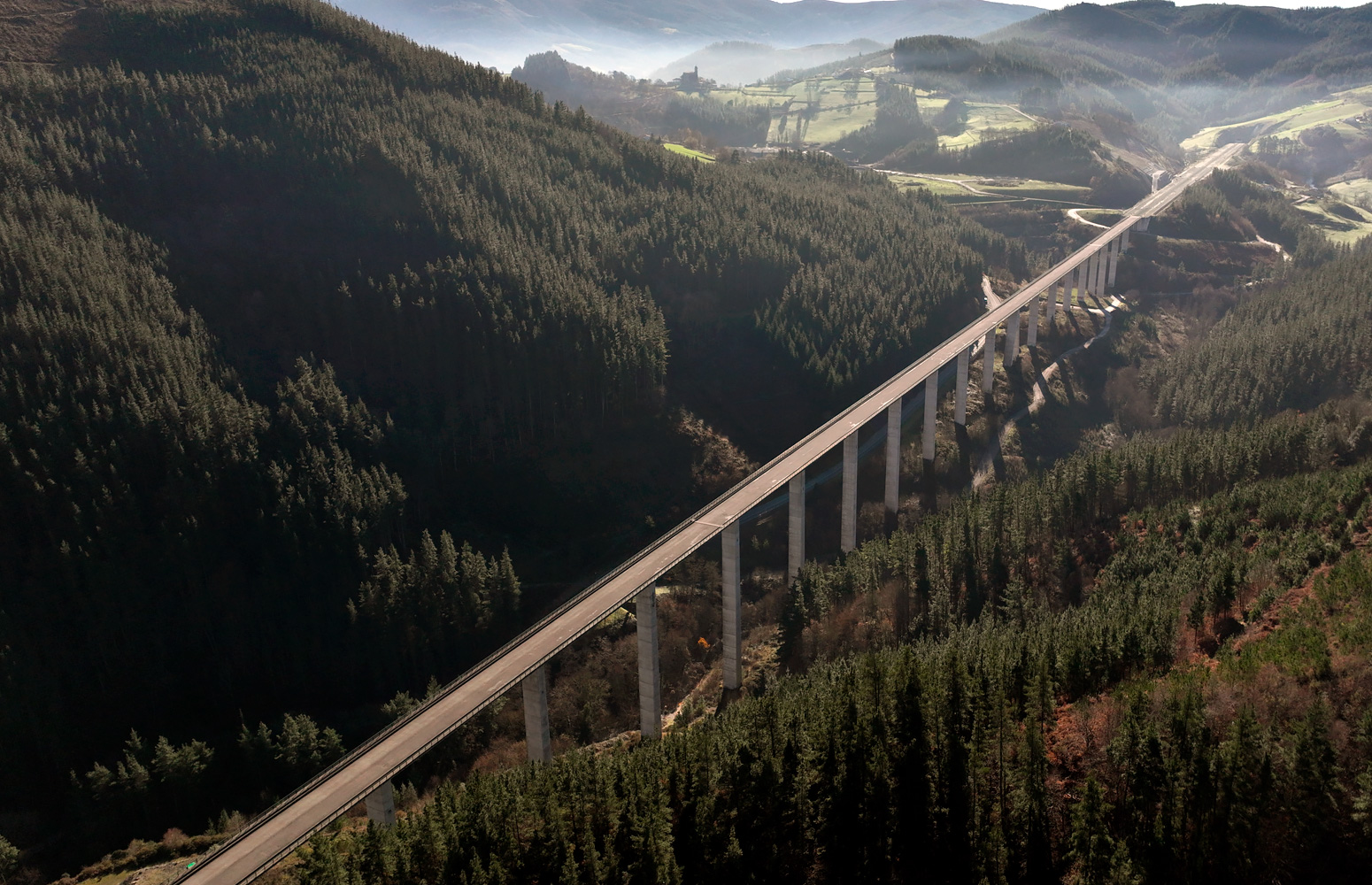Life cycle assessment was used to analyse the environmental performance of the Basque Y; it takes the environmental impacts produced during the construction and maintenance phases into consideration. The results show that this line will lack sufficient capacity to mitigate the effects of climate change and reduce energy consumption. The results obtained and the methodology may be useful when analysing other high-speed lines or other transport infrastructures.
The construction and maintenance of the Basque Y call into question the reduction in emissions and energy savings
The Ekopol group of the University of the Basque Country (UPV/EHU) has analysed the life cycle of the Basque Y of the High Speed Train to evaluate its environmental performance
- Research
First publication date: 22/03/2024

The European Union has set itself the goal of achieving carbon neutrality by 2050. In that respect, transport policies are crucial when it comes to mitigating the effects of climate change, given that in the Basque Country, for example, transport accounts for a third of greenhouse gas emissions. The HST (High Speed Train) has been presented as a means of transport that can greatly help to achieve these environmental goals. Unusually, the line known as the «Basque Y» of the high-speed rail network between Madrid and the Basque Autonomous Community aims to have a mixed freight and passenger transport line, which is regarded as essential for achieving more sustainable mobility.
Members of the Ekopol research group at the UPV/EHU carried out a life cycle assessment of the Basque Y to assess the environmental performance of this line throughout its useful life. “The environmental burdens of infrastructure construction are not often taken into account. The HST is said to reduce environmental burdens because the train is electric, but none of the burdens generated during the construction phase are taken into account,” pointed out Andoni Kortazar, lecturer in the UPV/EHU’s Department of Public Policy and Economic History. They factored in all the impacts, from the very moment that the raw materials used to build the infrastructure are procured right up to the completion of the project: “Mining, construction phase, maintenance works, the whole operation phase, etc. We took the whole life cycle into consideration,” added Kortazar.
In order to check whether the Basque Y can contribute to reducing energy consumption, mitigating climate change and meeting the objectives set by the European Union in terms of emissions, the latest available updated data were used: “We analysed the entire route of the project, metre by metre. Among other things, we measured the length of each of the tunnels and viaducts and applied the corresponding coefficients; we also applied the coefficients corresponding to the transport estimates provided by the operation administration, Adif and the Basque Government. So we were able to find out how many years it would take for this project to generate environmental benefits,” explained the researcher.
Request to reconsider the need for the HST extension
The results show that the impacts generated during the construction phase are much higher than those of other HST lines, firstly, due to the fact that the mountainous orography of the region means that more complex infrastructures requiring greater consumption of resources and energy need to be built and, secondly, due to the low demand for transport. According to the researchers, “this new corridor is not justified in terms of emission reductions and energy savings. Moreover, it will have a minor impact on the low level of rail freight transport in Spain”. In fact, the HST network in Spain only carries passengers and the link with freight transport in France will not be ready before 2037.
When the line starts operating in 2030, passenger demand is expected to be between 5.8 and 3.3 million, “much lower than the demand of other HSTs across the world”, they pointed out. So the Basque Y line will not have sufficient passenger transport demand to provide environmental benefits. In other words, “the transport demand anticipated for the Basque Y is not sufficient to justify the construction of the entire infrastructure in terms of energy savings and reduction in atmospheric emissions", the researchers pointed out.
That is why “Spain needs to rethink the need for extending its HST”, the researchers concluded. “The Basque Y will not have sufficient capacity to mitigate the effects of climate change and reduce energy consumption and other environmental impacts. In the context of the global environmental crisis, this project may worsen the situation rather than improve it.”
Additional information
This research work was conducted by Andoni Kortazar (Department of Public Policy and Economic History) and Gorka Bueno (Department of Electronic Technology) of the UPV/EHU’s Ekopol research group, together with David Hoyos (Department of Quantitative Methods), who routinely collaborates with Ekopol. The results and the methodology developed in the research open up interesting opportunities for conducting life cycle assessments in other high-speed rail projects or in infrastructures of other types of transport.
Bibliographic reference
- Is high-speed rail a sustainable mobility option? A life-cycle assessment of the Basque Y project in Spain
- Environmental Impact Assessment Review
- DOI: 10.1016/j.eiar.2023.107276




